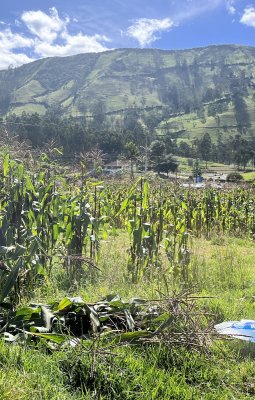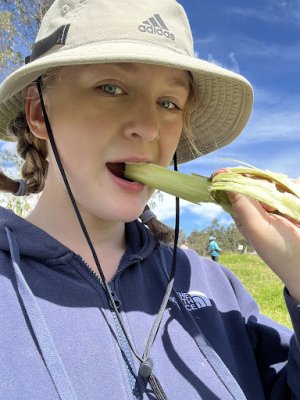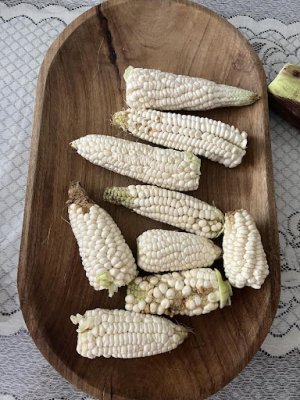Since being stationed in the town of Mindo for my service portion of SST, I’ve noticed a big cultural difference between U.S. Mennonites and Ecuadorian “Mindo-nites” – pun intended 🙂 approaches to life. There’s a palpable sense of serenity and...

News
Choclo
Jul 19 2023
One of the first things you learn when you come to Ecuador is their love of choclo, which is essentially their variety of sweet corn. On one of our trips to different parts of Ecuador, we even drove past a giant choclo statue! Served degrained in soups or just boiled whole on the cob, choclo has bigger kernels, is less sweet, and is a little starchier than the sweet corn we are accustomed to in the U.S., especially in the Midwest. After drying on the stalk for longer, it can also be mashed, mixed with cheese, and cooked in the husk to create a dish called humitas (a dish I am told I will learn how to make soon!)
When I was first introduced to choclo in Quito, I will admit that I wasn’t the biggest fan; however, that changed during my service placement. One Saturday morning, my host parents, my host cousin, and I piled into the car and followed my host uncle, cousin, and grandpa to a choclo patch. We were greeted by the workers who tend the land and went to work harvesting enough choclo to fill one bag each to take home. One of the workers went through the field ahead of us to determine which ears were ready and sweet and then snapped the stalks off at the base. We then pulled the stalks out and brought them to a pile at the edge of the field. There was lots of laughing and a bit of confusion on our part as we really had no idea how the worker was determining which ears were ready.
After enough stalks were piled at the edge of the field, we removed the ears from the stalks, and I was taught how to suck the sweet juice from the cane, a process that involved snapping it and peeling back the tough skin with my teeth. I realized my Swiss Army knife would aid in this process, and we all were grateful for the serrated knife attachment to get the peeling process started. Although my ninety-one-year-old host grandpa could not partake in this aspect, he had fun reclining on the hillside and catching up with his nephew and son.
Back at home, we enjoyed eating the choclo together, and it was by far the best choclo I’d ever eaten. My host mom couldn’t stop commenting on how fresh it was, and I couldn’t agree more. Even living with a mestizo host family, I appreciated how I still could see the indigenous values that were put into practice as we used every part of the living being we harvested. I was also happy with my decision to push myself out of my comfort zone and partake in activities that were a fun and important way to bond with the Ecuadorians who have graciously welcomed me into their lives.



